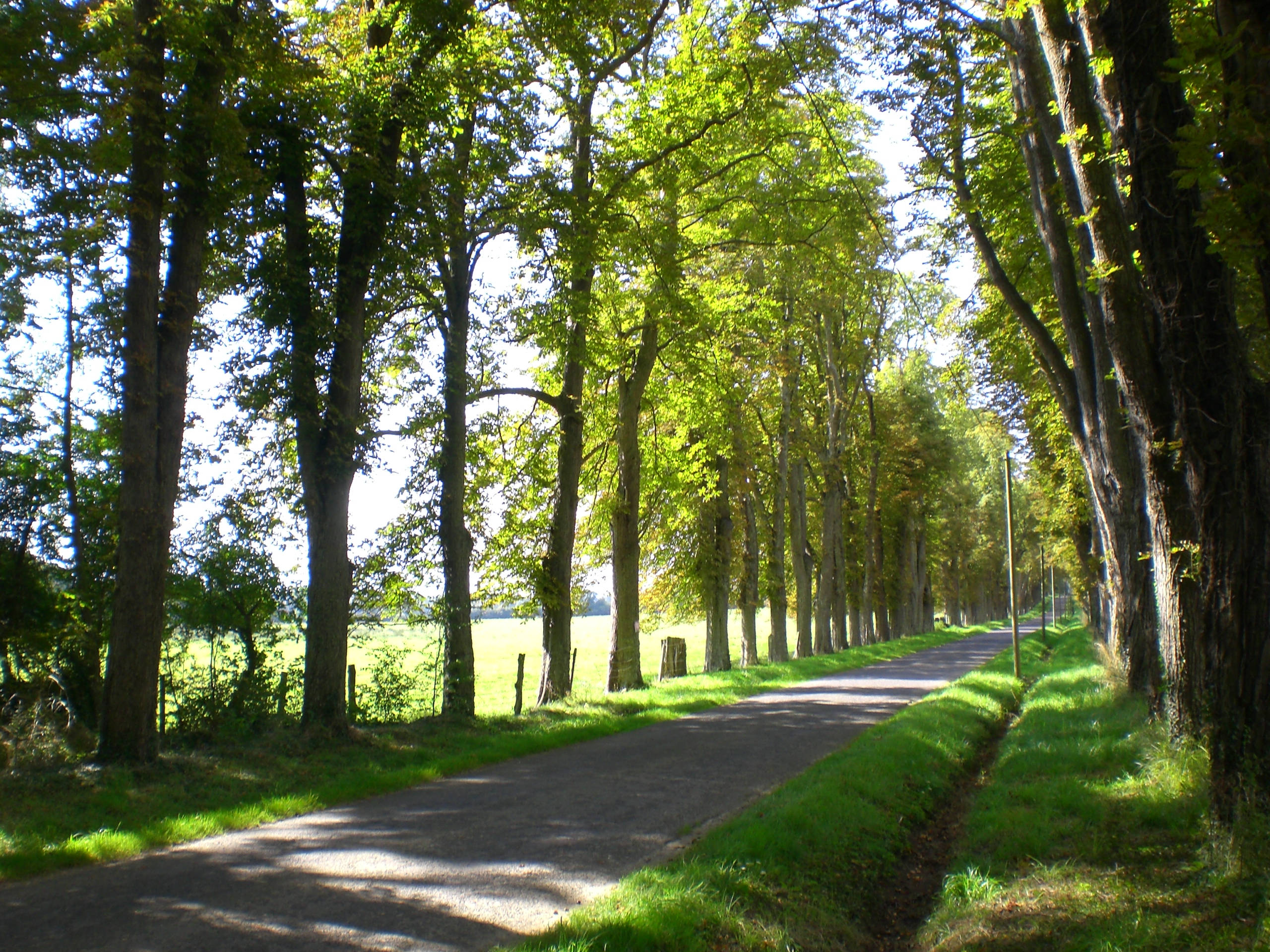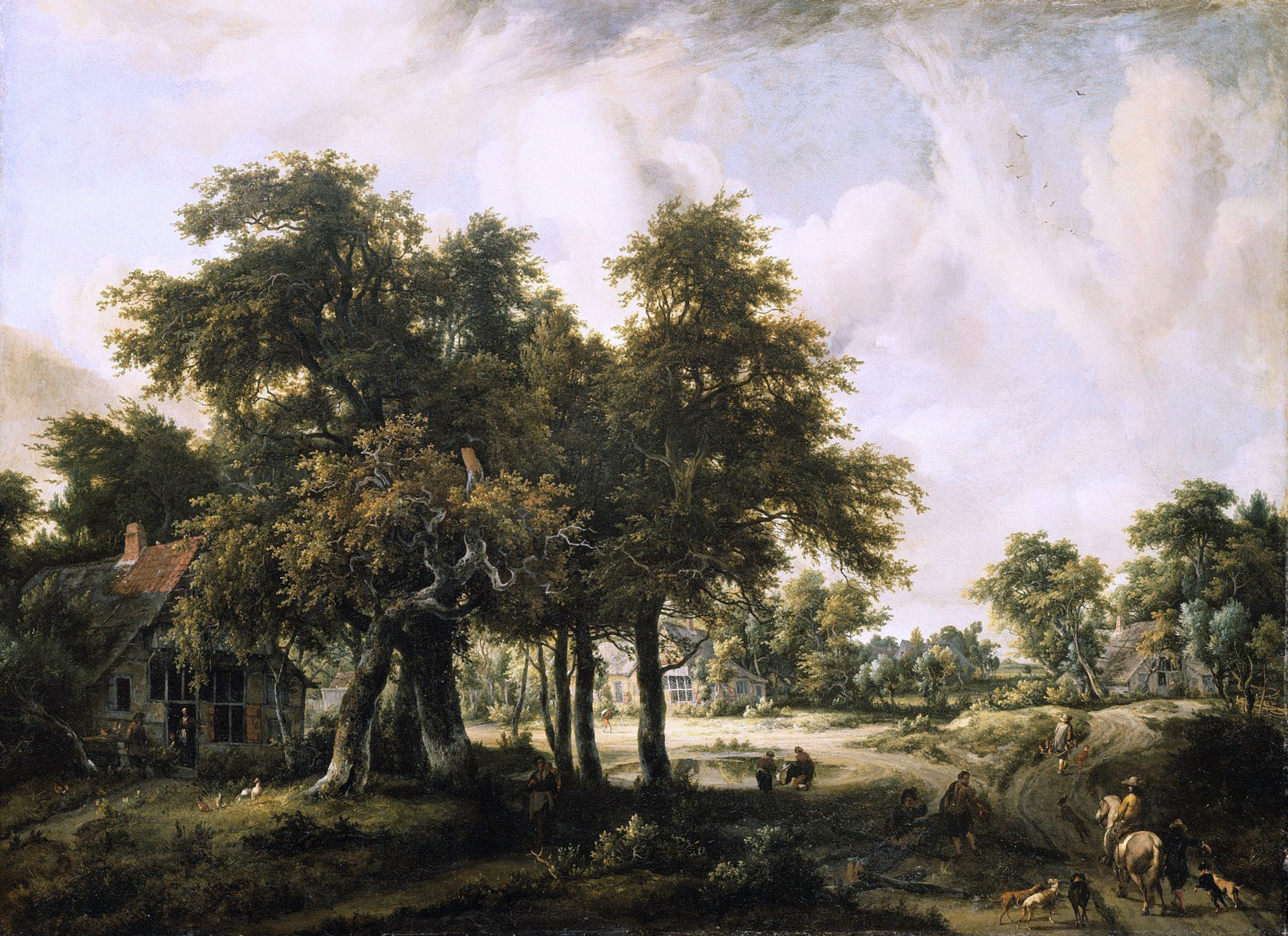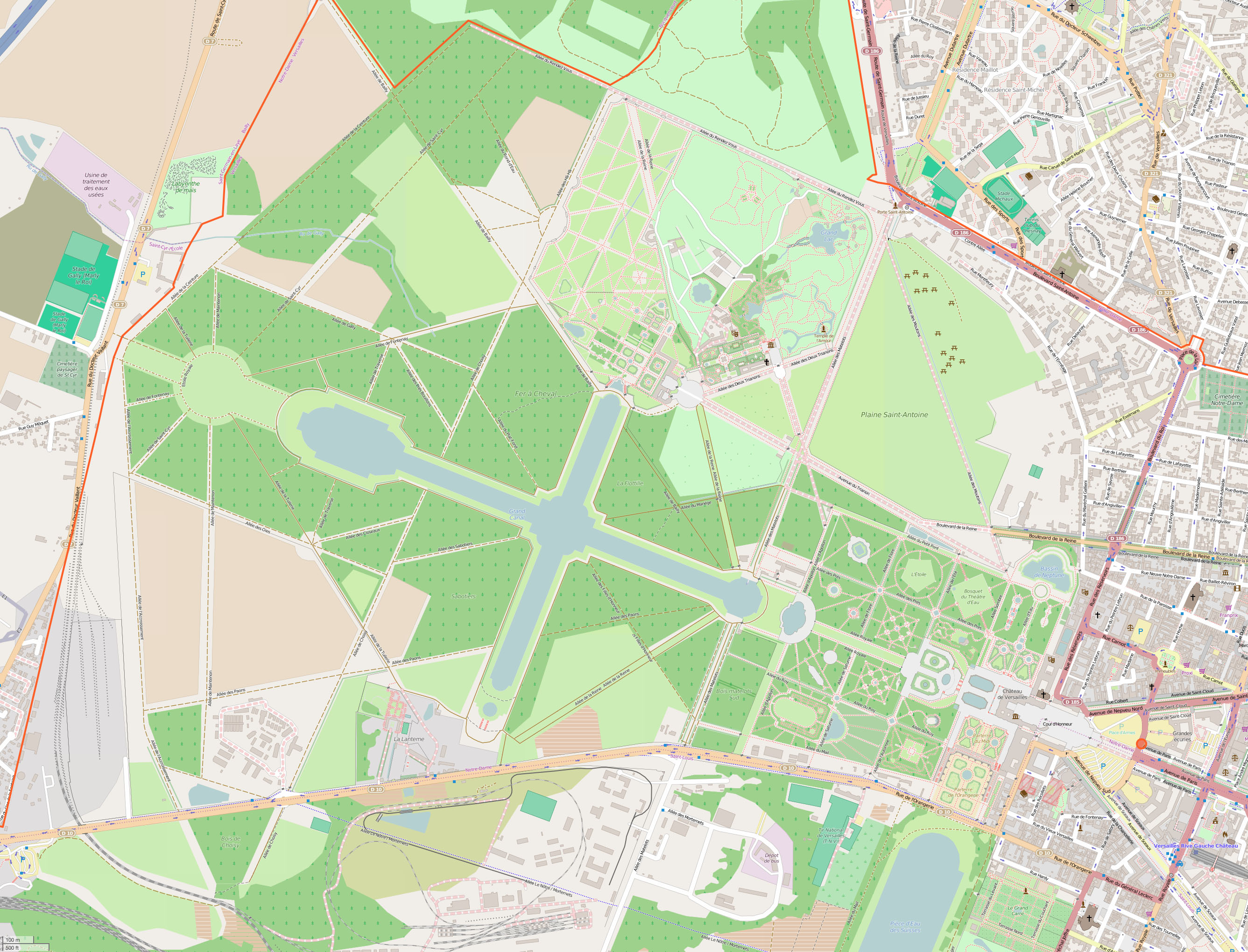|
Avenue (landscape)
In landscaping, an avenue (from the French language, French), alameda (from the Portuguese language, Portuguese and Spanish language, Spanish), or allée (from the French), is traditionally a straight path or road with a line of trees or large shrubs running along each side, which is used, as its Latin source ''venire'' ("to come") indicates, to emphasize the "coming to," or ''arrival'' at a landscape or architecture, architectural feature. In most cases, the trees planted in an avenue will be all of the same species or cultivar, so as to give uniform appearance along the full length of the avenue. The French term ''allée'' is used for avenues planted in parks and landscape gardens, as well as boulevards such as the ''Grande Allée'' in Quebec City, Canada, and ''Karl-Marx-Allee'' in Berlin. History The avenue is one of the oldest ideas in the history of gardens. An Avenue of Sphinxes still leads to the tomb of the pharaoh Hatshepsut. Avenues similarly defined by guardian stone ... [...More Info...] [...Related Items...] OR: [Wikipedia] [Google] [Baidu] |
Tree Alley
In botany, a tree is a perennial plant with an elongated Plant stem, stem, or trunk (botany), trunk, usually supporting branches and leaves. In some usages, the definition of a tree may be narrower, including only woody plants with secondary growth, plants that are usable as lumber or plants above a specified height. In wider definitions, the taller Arecaceae, palms, Cyatheales, tree ferns, Musa (genus), bananas, and bamboos are also trees. Trees are not a Taxon, taxonomic group but include a variety of plant species that Convergent evolution, have independently evolved a trunk and branches as a way to tower above other plants to compete for sunlight. The majority of tree species are angiosperms or hardwoods; of the rest, many are gymnosperms or softwoods. Trees tend to be long-lived, some reaching several thousand years old. Trees have been in existence for 370 million years. It is estimated that there are some three trillion mature trees in the world. A tree typically has ... [...More Info...] [...Related Items...] OR: [Wikipedia] [Google] [Baidu] |
Pharaoh
Pharaoh (, ; Egyptian: ''pr ꜥꜣ''; cop, , Pǝrro; Biblical Hebrew: ''Parʿō'') is the vernacular term often used by modern authors for the kings of ancient Egypt who ruled as monarchs from the First Dynasty (c. 3150 BC) until the annexation of Egypt by the Roman Empire in 30 BC. However, regardless of gender, "king" was the term used most frequently by the ancient Egyptians for their monarchs through the middle of the Eighteenth Dynasty during the New Kingdom. The term "pharaoh" was not used contemporaneously for a ruler until a possible reference to Merneptah, c. 1210 BC during the Nineteenth Dynasty, nor consistently used until the decline and instability that began with the Twenty-Fifth Dynasty. In the early dynasties, ancient Egyptian kings had as many as three titles: the Horus, the Sedge and Bee ( ''nswt-bjtj''), and the Two Ladies or Nebty ( ''nbtj'') name. The Golden Horus and the nomen and prenomen titles were added later. In Egyptian society, religio ... [...More Info...] [...Related Items...] OR: [Wikipedia] [Google] [Baidu] |
The Avenue At Middelharnis
''The Avenue at Middelharnis'' is a Dutch Golden Age painting of 1689 by Meindert Hobbema, now in the National Gallery, London. It is in oil on canvas and measures . It shows a road leading to the village of Middelharnis on the island of Goeree-Overflakkee in the Meuse ( nl, Maas) delta in South Holland, the Netherlands. The painting has long been one of the best-known Dutch landscape paintings, and certainly Hobbema's best-known work, at least in the English-speaking world: "it is as if the artist had produced only a single picture" according to Christopher Lloyd. Cornelis Hofstede de Groot, the great specialist of a century ago, thought it "the finest picture, next to Rembrandt's '' Syndics'', which has been painted in Holland". According to Michael Levey, "it occupies a position in painting somewhat equivalent to that in poetry of '' Gray's Elegy'', and for Seymour Slive "it is the swan song of Holland's great period of landscape painting which fully deserves its ... [...More Info...] [...Related Items...] OR: [Wikipedia] [Google] [Baidu] |
Meindert Hobbema
Meindert Lubbertszoon Hobbema (bapt. 31 October 1638 – 7 December 1709) was a Dutch Golden Age painter of landscapes, specializing in views of woodland, although his most famous painting, ''The Avenue at Middelharnis'' (1689, National Gallery, London), shows a different type of scene. Hobbema was a pupil of Jacob van Ruisdael, the pre-eminent landscape painter of the Dutch Golden Age, and in his mature period produced paintings developing one aspect of his master's more varied output, specializing in "sunny forest scenes opened by roads and glistening ponds, fairly flat landscapes with scattered tree groups, and water mills", including over 30 of the last in paintings. The majority of his mature works come from the 1660s; after he married and took a job as an exciseman in 1668 he painted less, and after 1689 apparently not at all. He was not very well known in his lifetime or for nearly a century after his death, but became steadily more popular from the last decades of t ... [...More Info...] [...Related Items...] OR: [Wikipedia] [Google] [Baidu] |
Het Loo
Het Loo Palace ( nl, Paleis Het Loo , meaning "The wikt:lea#English, Lea") is a palace in Apeldoorn, Netherlands, built by the House of Orange-Nassau. History The symmetry, symmetrical Dutch Baroque architecture, Dutch Baroque building was designed by Jacob Roman and Johan van Swieten and was built between 1684 and 1686 for stadtholder-king William III of England, William III and Mary II of England, his consort Princess Mary. The garden was designed by Claude Desgotz. After the elder House of Orange-Nassau had become extinct with the death of William III of England in 1702, he left all his estates in the Netherlands to his cousin Johan Willem Friso of Orange-Nassau, Johan Willem Friso of the House of Nassau#First Counts and Princes of Nassau-Hadamar, House of Nassau-Dietz in his Last Will. However, the King of Prussia claimed them, as he also descended from the Princes of Orange, and the Houses of Orange-Nassau and Hohenzollern had, a few generations before, made an inheritance ... [...More Info...] [...Related Items...] OR: [Wikipedia] [Google] [Baidu] |
Gardens Of Versailles
The Gardens of Versailles (french: Jardins du château de Versailles ) occupy part of what was once the ''Domaine royal de Versailles'', the royal demesne of the château of Versailles. Situated to the west of the palace, the gardens cover some 800 hectares of land, much of which is landscaped in the classic French formal garden style perfected here by André Le Nôtre. Beyond the surrounding belt of woodland, the gardens are bordered by the urban areas of Versailles to the east and Le Chesnay to the north-east, by the National Arboretum de Chèvreloup to the north, the Versailles plain (a protected wildlife preserve) to the west, and by the Satory Forest to the south. Administered by the Public Establishment of the Palace, Museum and National Estate of Versailles, an autonomous public entity operating under the aegis of the French Ministry of Culture, the gardens are now one of the most visited public sites in France, receiving more than six million visitors a year. In addi ... [...More Info...] [...Related Items...] OR: [Wikipedia] [Google] [Baidu] |
Landscape Design
Landscape design is an independent profession and a design and art tradition, practiced by landscape designers, combining nature and culture. In contemporary practice, landscape design bridges the space between landscape architecture and garden design. Design scope Landscape design focuses on both the integrated master landscape planning of a property and the specific garden design of landscape elements and plants within it. The practical, aesthetic, horticultural, and environmental sustainability are also components of landscape design, which is often divided into hardscape design and softscape design. Landscape designers often collaborate with related disciplines such as architecture, civil engineering, surveying, landscape contracting, and artisan specialties. Design projects may involve two different professional roles: landscape design and landscape architecture. * Landscape design typically involves artistic composition and artisanship, horticultural finesse and experti ... [...More Info...] [...Related Items...] OR: [Wikipedia] [Google] [Baidu] |
Baroque
The Baroque (, ; ) is a style of architecture, music, dance, painting, sculpture, poetry, and other arts that flourished in Europe from the early 17th century until the 1750s. In the territories of the Spanish and Portuguese empires including the Iberian Peninsula it continued, together with new styles, until the first decade of the 19th century. It followed Renaissance art and Mannerism and preceded the Rococo (in the past often referred to as "late Baroque") and Neoclassical styles. It was encouraged by the Catholic Church as a means to counter the simplicity and austerity of Protestant architecture, art, and music, though Lutheran Baroque art developed in parts of Europe as well. The Baroque style used contrast, movement, exuberant detail, deep colour, grandeur, and surprise to achieve a sense of awe. The style began at the start of the 17th century in Rome, then spread rapidly to France, northern Italy, Spain, and Portugal, then to Austria, southern Germany, and Russia. B ... [...More Info...] [...Related Items...] OR: [Wikipedia] [Google] [Baidu] |
French Formal Garden
The French formal garden, also called the (), is a style of garden based on symmetry and the principle of imposing order on nature. Its epitome is generally considered to be the Gardens of Versailles designed during the 17th century by the landscape architect André Le Nôtre for Louis XIV and widely copied by other European courts. Éric Mension-Rigau, "Les jardins témoins de leur temps" in '' Historia'', n° 7/8 (2000). History Renaissance influence The ''jardin à la française'' evolved from the French Renaissance garden, a style which was inspired by the Italian Renaissance garden at the beginning of the 16th century. The Italian Renaissance garden, typified by the Boboli Gardens in Florence and the Villa Medici in Fiesole, was characterized by planting beds, or parterres, created in geometric shapes, and laid out symmetrical patterns; the use of fountains and cascades to animate the garden; stairways and ramps to unite different levels of the garden; grottos, ... [...More Info...] [...Related Items...] OR: [Wikipedia] [Google] [Baidu] |
Archaeology
Archaeology or archeology is the scientific study of human activity through the recovery and analysis of material culture. The archaeological record consists of artifacts, architecture, biofacts or ecofacts, sites, and cultural landscapes. Archaeology can be considered both a social science and a branch of the humanities. It is usually considered an independent academic discipline, but may also be classified as part of anthropology (in North America – the four-field approach), history or geography. Archaeologists study human prehistory and history, from the development of the first stone tools at Lomekwi in East Africa 3.3 million years ago up until recent decades. Archaeology is distinct from palaeontology, which is the study of fossil remains. Archaeology is particularly important for learning about prehistoric societies, for which, by definition, there are no written records. Prehistory includes over 99% of the human past, from the Paleolithic until the adven ... [...More Info...] [...Related Items...] OR: [Wikipedia] [Google] [Baidu] |









.jpg)